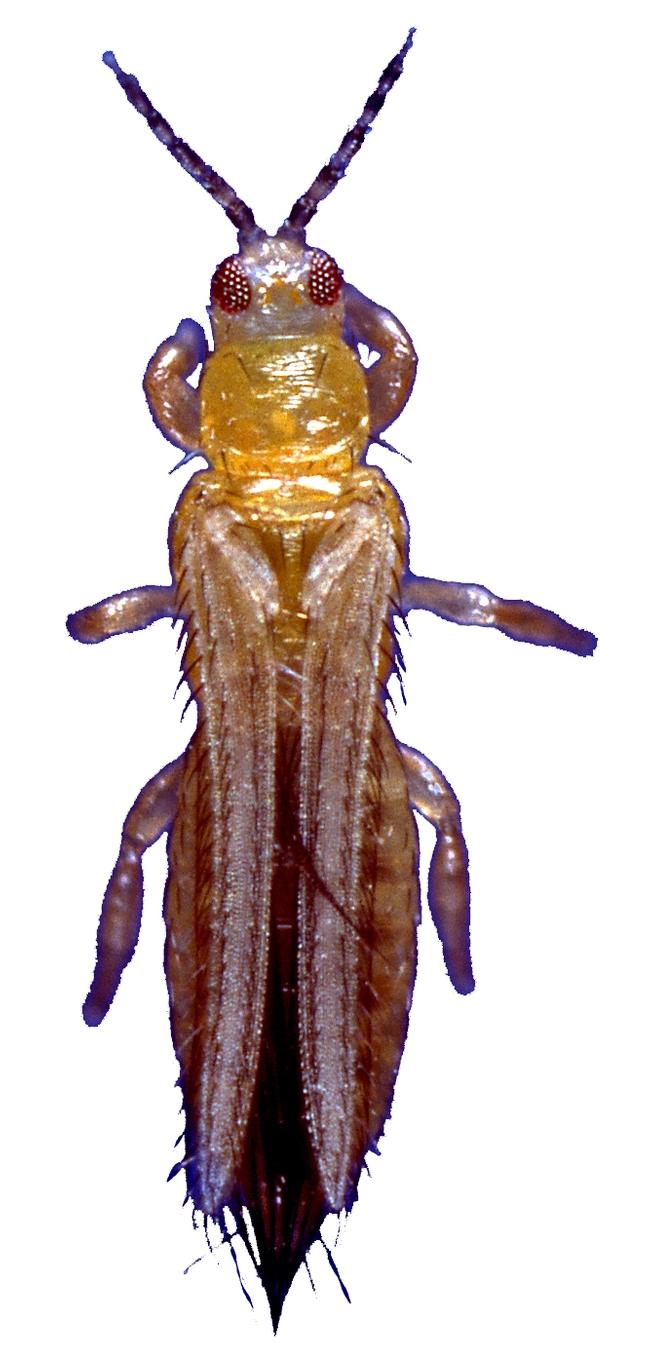
The article, “Genome-Enabled Insights into the Biology of Thrips as Crop Pests,” is published in the journal BMC Biology. It is the work of 57 scientists on five continents.
“This project represents over eight years of work by at least 17 laboratories across the globe,” said Professor Ullman, a former chair of the entomology department and a fellow of the Entomological Society of America and the American Association for the Advancement of Science. Her laboratory worked closely with project leader and first author Dorith Rotenberg of North Carolina State University. Project scientist Sulley Ben-Mahmoud of the Ullman lab is the paper's third author.
The western flower thrips, Frankliniella occidentalis, causes billions of dollars a year in damage worldwide. Native to Western North America and about the size of a pinhead, the insect feeds on a wide array of food, fiber, and ornamental crops and transmits plant viruses that cause significant economic damage.
“The western flower thrips and the viruses it transmits, including tomato spotted wilt virus, is important to California agriculture, causing serious problems for tomato growers, pepper growers and growers of leafy greens,” Ullman said. The tomato spotted wilt virus infects more than 1000 plant species, ranging from tomatoes, tobacco and peanuts to pansies and chrysanthemums.
“This system has been a central element of my research program for over 30 years," Ullman said, "and I am extremely excited to see this important resource made available as a tool to help us understand and control these important pests.”
In their abstract, the authors wrote that the publication should lead to “understanding the underlying genetic mechanisms of the processes governing thrips pest and vector biology, feeding behaviors, ecology, and insecticide resistance.”
This is the first genome sequence and analysis for a member of the Thysanoptera, an order that contains more than 7,000 species of small insects with fringed wings.
(See more information on the project on the UC Davis Department of Entomology and Nematology website)
Attached Images:
